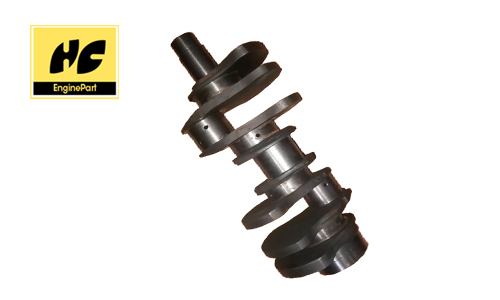Causes and measurement of crankshaft wear
2020-08-13
The worn parts of the crankshaft are mainly the main journal and connecting rod shaft whiskers. The exchange of the reciprocating motion of the piston of the four-stroke engine and the rotation of the crankshaft will cause the crankshaft to be rubbed at different angles. This friction has been reduced to a low level under the action of the lubricating oil.

When the engine is running at high speed and under heavy load, the temperature of the bearing bush increases and thermal expansion occurs. Therefore, a certain gap should be left between the bearing and the bearing to protect the crankshaft. The gap between the shaft and the bush cannot ensure that the engine runs for tens of thousands of kilometers. The amount of the gap gradually increases with the wear of the shaft and the bearing.
Although the crankshaft is protected by lubricating oil and bearing clearance, sometimes the crankshaft suffers abnormal wear due to insufficient oil pressure, dirty oil, improper bearing clearance, uneven bearing contact surface, insufficient finish and precision.
The crankshaft of a car can be inspected with a calibration platform, mainly to see its degree of buckling, which can be measured with a turning gear table. There is also the wear of its main journal and connecting rod journal, which can be measured with a micrometer. The crankshaft will produce journal wear during use, forming out-of-round and cones. The following is about its detection method:
1. Wipe the crankshaft thoroughly, especially the inspection part should be free of oil, and the measuring part should be away from the oil hole;
2. Measurement of roundness deviation: Use an outside micrometer to perform multi-point measurement on the same cross-section where the journal is severely worn (first measure on both sides of the journal oil hole, and then rotate 900), between the large diameter and the small diameter Half of the difference is the roundness deviation;
3. Cylindricity deviation measurement: multi-point measurement on the same longitudinal section of the journal, half of the difference between the large diameter and the small diameter is the cylindricity deviation.